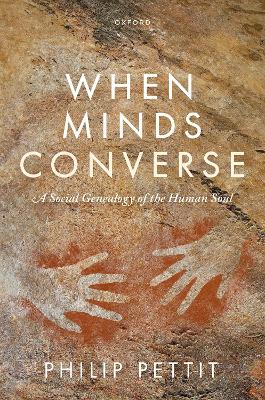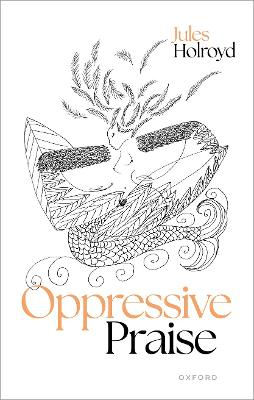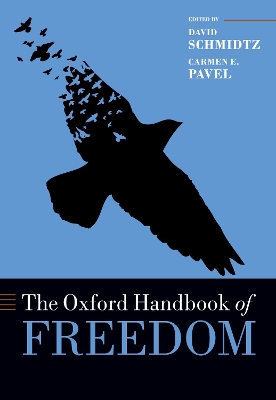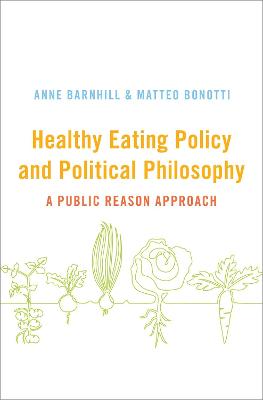No Justice, No Peace
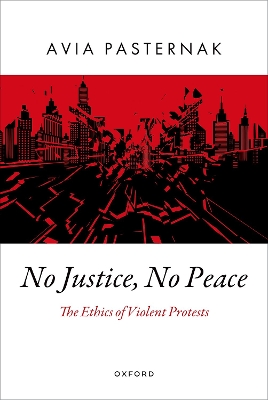 -10%
portes grátis
-10%
portes grátis
No Justice, No Peace
The Ethics of Violent Protests
Pasternak, Avia
Oxford University Press Inc
05/2025
288
Dura
9780197556689
Pré-lançamento - envio 15 a 20 dias após a sua edição
Descrição não disponível.
Acknowledgments
CHAPTER 1: INTRODUCTION
1.1 From Civil to Uncivil Disobedience
1.2 Assessing Violent Political Resistance
1.3 The Arguments of the Book
1.4 Plan of the Book
CHAPTER 2: WHAT VIOLENT PROTESTORS WANT
2.1 Violent Protests as Political Events
2.2 Violent Protests as a Response to Domestic Injustice
2.3 Violent Protestors' Goals
2.4 Violent Protests' Key Features
CHAPTER 3: JUSTIFYING PROTECTIVE HARM
3.1 Defensive and Protective Harm
3.2 Necessity
3.3 Effectiveness, Risk, and Chances of Success
3.4 Proportionality and The Moral Weighing of Harm
3.5 The Full Picture: Connecting the Three Criteria
3.6 Resorting to Protest and Conduct in Protest
CHAPTER 4: THE NECESSITY AND EFFECTIVENESS OF VIOLENCE
4.1 Political Options for Oppressed Citizens
4.2 Expressive Goals and Violent Protest
4.3 Violent Resistance Campaigns and Social Change
CHAPTER 5: THE MORAL SERIOUSNESS OF HARM TO POLICE OFFICERS
5.1 Damage to State Property
5.2 Harm to State Officers: Culpable Contributions
5.3 Harm to State Officers: Participation in the Police Force
5.4 Three Concerns about Fairness
CHAPTER 6: HARM TO FELLOW CITIZENS
6.1 Citizens' Blame and Liability
6.2 Grounding Liability in Benefits
6.3 Citizens' Participation in State Wrongdoing
6.4 Associative Political Obligations
6.5 Duties of Rescue and Assistance
CHAPTER 7: REDISTRIBUTING PROTECTIVE HARM
7.1 Indiscriminate Harm and Crowd Control in Violent Protests
7.2 Lesser-Evil Justifications of Excessive Harm
7.3 Re-Distributing Excessive Harm
7.4 Burdening the Oppressed
7.5 Resisting Violent Protestors
CHAPTER 8: ASSESSING VIOLENT PROTESTS
8.1 The Seriousness of Direct Harm in Violent Protests
8.2 A duty to Collectivize?
8.3 The Problem of Brutal Response
8.4 Assessing the Benefits of Violent Protests
8.5 Core Features of the Permissible Violent Protest
CHAPTER 9: RESPONDING TO VIOLENT PROTESTORS
9.1. Should the State Punish Justified Protestors?
9.2 Implications for Protestors and Fellow Citizens
9.3 Implications for the Criminal Justice System: Sentencing
9.4 Implications for the Criminal Justice System: Restorative Justice
10. CONCLUSIONS
BIBLIOGRAPHY
CHAPTER 1: INTRODUCTION
1.1 From Civil to Uncivil Disobedience
1.2 Assessing Violent Political Resistance
1.3 The Arguments of the Book
1.4 Plan of the Book
CHAPTER 2: WHAT VIOLENT PROTESTORS WANT
2.1 Violent Protests as Political Events
2.2 Violent Protests as a Response to Domestic Injustice
2.3 Violent Protestors' Goals
2.4 Violent Protests' Key Features
CHAPTER 3: JUSTIFYING PROTECTIVE HARM
3.1 Defensive and Protective Harm
3.2 Necessity
3.3 Effectiveness, Risk, and Chances of Success
3.4 Proportionality and The Moral Weighing of Harm
3.5 The Full Picture: Connecting the Three Criteria
3.6 Resorting to Protest and Conduct in Protest
CHAPTER 4: THE NECESSITY AND EFFECTIVENESS OF VIOLENCE
4.1 Political Options for Oppressed Citizens
4.2 Expressive Goals and Violent Protest
4.3 Violent Resistance Campaigns and Social Change
CHAPTER 5: THE MORAL SERIOUSNESS OF HARM TO POLICE OFFICERS
5.1 Damage to State Property
5.2 Harm to State Officers: Culpable Contributions
5.3 Harm to State Officers: Participation in the Police Force
5.4 Three Concerns about Fairness
CHAPTER 6: HARM TO FELLOW CITIZENS
6.1 Citizens' Blame and Liability
6.2 Grounding Liability in Benefits
6.3 Citizens' Participation in State Wrongdoing
6.4 Associative Political Obligations
6.5 Duties of Rescue and Assistance
CHAPTER 7: REDISTRIBUTING PROTECTIVE HARM
7.1 Indiscriminate Harm and Crowd Control in Violent Protests
7.2 Lesser-Evil Justifications of Excessive Harm
7.3 Re-Distributing Excessive Harm
7.4 Burdening the Oppressed
7.5 Resisting Violent Protestors
CHAPTER 8: ASSESSING VIOLENT PROTESTS
8.1 The Seriousness of Direct Harm in Violent Protests
8.2 A duty to Collectivize?
8.3 The Problem of Brutal Response
8.4 Assessing the Benefits of Violent Protests
8.5 Core Features of the Permissible Violent Protest
CHAPTER 9: RESPONDING TO VIOLENT PROTESTORS
9.1. Should the State Punish Justified Protestors?
9.2 Implications for Protestors and Fellow Citizens
9.3 Implications for the Criminal Justice System: Sentencing
9.4 Implications for the Criminal Justice System: Restorative Justice
10. CONCLUSIONS
BIBLIOGRAPHY
Este título pertence ao(s) assunto(s) indicados(s). Para ver outros títulos clique no assunto desejado.
Acknowledgments
CHAPTER 1: INTRODUCTION
1.1 From Civil to Uncivil Disobedience
1.2 Assessing Violent Political Resistance
1.3 The Arguments of the Book
1.4 Plan of the Book
CHAPTER 2: WHAT VIOLENT PROTESTORS WANT
2.1 Violent Protests as Political Events
2.2 Violent Protests as a Response to Domestic Injustice
2.3 Violent Protestors' Goals
2.4 Violent Protests' Key Features
CHAPTER 3: JUSTIFYING PROTECTIVE HARM
3.1 Defensive and Protective Harm
3.2 Necessity
3.3 Effectiveness, Risk, and Chances of Success
3.4 Proportionality and The Moral Weighing of Harm
3.5 The Full Picture: Connecting the Three Criteria
3.6 Resorting to Protest and Conduct in Protest
CHAPTER 4: THE NECESSITY AND EFFECTIVENESS OF VIOLENCE
4.1 Political Options for Oppressed Citizens
4.2 Expressive Goals and Violent Protest
4.3 Violent Resistance Campaigns and Social Change
CHAPTER 5: THE MORAL SERIOUSNESS OF HARM TO POLICE OFFICERS
5.1 Damage to State Property
5.2 Harm to State Officers: Culpable Contributions
5.3 Harm to State Officers: Participation in the Police Force
5.4 Three Concerns about Fairness
CHAPTER 6: HARM TO FELLOW CITIZENS
6.1 Citizens' Blame and Liability
6.2 Grounding Liability in Benefits
6.3 Citizens' Participation in State Wrongdoing
6.4 Associative Political Obligations
6.5 Duties of Rescue and Assistance
CHAPTER 7: REDISTRIBUTING PROTECTIVE HARM
7.1 Indiscriminate Harm and Crowd Control in Violent Protests
7.2 Lesser-Evil Justifications of Excessive Harm
7.3 Re-Distributing Excessive Harm
7.4 Burdening the Oppressed
7.5 Resisting Violent Protestors
CHAPTER 8: ASSESSING VIOLENT PROTESTS
8.1 The Seriousness of Direct Harm in Violent Protests
8.2 A duty to Collectivize?
8.3 The Problem of Brutal Response
8.4 Assessing the Benefits of Violent Protests
8.5 Core Features of the Permissible Violent Protest
CHAPTER 9: RESPONDING TO VIOLENT PROTESTORS
9.1. Should the State Punish Justified Protestors?
9.2 Implications for Protestors and Fellow Citizens
9.3 Implications for the Criminal Justice System: Sentencing
9.4 Implications for the Criminal Justice System: Restorative Justice
10. CONCLUSIONS
BIBLIOGRAPHY
CHAPTER 1: INTRODUCTION
1.1 From Civil to Uncivil Disobedience
1.2 Assessing Violent Political Resistance
1.3 The Arguments of the Book
1.4 Plan of the Book
CHAPTER 2: WHAT VIOLENT PROTESTORS WANT
2.1 Violent Protests as Political Events
2.2 Violent Protests as a Response to Domestic Injustice
2.3 Violent Protestors' Goals
2.4 Violent Protests' Key Features
CHAPTER 3: JUSTIFYING PROTECTIVE HARM
3.1 Defensive and Protective Harm
3.2 Necessity
3.3 Effectiveness, Risk, and Chances of Success
3.4 Proportionality and The Moral Weighing of Harm
3.5 The Full Picture: Connecting the Three Criteria
3.6 Resorting to Protest and Conduct in Protest
CHAPTER 4: THE NECESSITY AND EFFECTIVENESS OF VIOLENCE
4.1 Political Options for Oppressed Citizens
4.2 Expressive Goals and Violent Protest
4.3 Violent Resistance Campaigns and Social Change
CHAPTER 5: THE MORAL SERIOUSNESS OF HARM TO POLICE OFFICERS
5.1 Damage to State Property
5.2 Harm to State Officers: Culpable Contributions
5.3 Harm to State Officers: Participation in the Police Force
5.4 Three Concerns about Fairness
CHAPTER 6: HARM TO FELLOW CITIZENS
6.1 Citizens' Blame and Liability
6.2 Grounding Liability in Benefits
6.3 Citizens' Participation in State Wrongdoing
6.4 Associative Political Obligations
6.5 Duties of Rescue and Assistance
CHAPTER 7: REDISTRIBUTING PROTECTIVE HARM
7.1 Indiscriminate Harm and Crowd Control in Violent Protests
7.2 Lesser-Evil Justifications of Excessive Harm
7.3 Re-Distributing Excessive Harm
7.4 Burdening the Oppressed
7.5 Resisting Violent Protestors
CHAPTER 8: ASSESSING VIOLENT PROTESTS
8.1 The Seriousness of Direct Harm in Violent Protests
8.2 A duty to Collectivize?
8.3 The Problem of Brutal Response
8.4 Assessing the Benefits of Violent Protests
8.5 Core Features of the Permissible Violent Protest
CHAPTER 9: RESPONDING TO VIOLENT PROTESTORS
9.1. Should the State Punish Justified Protestors?
9.2 Implications for Protestors and Fellow Citizens
9.3 Implications for the Criminal Justice System: Sentencing
9.4 Implications for the Criminal Justice System: Restorative Justice
10. CONCLUSIONS
BIBLIOGRAPHY
Este título pertence ao(s) assunto(s) indicados(s). Para ver outros títulos clique no assunto desejado.


